Below are Brookings Senior Fellow Todd Stern’s prepared remarks for an April 10, 2018 speech at Yale University’s School of Forestry and Environmental Studies. Todd Stern was the U.S. State Department’s Special Envoy for Climate Change from January 2009 to April 2016, and served as the chief U.S. negotiator of the Paris Agreement. He is currently a Senior Fellow in the Cross-Brookings Initiative on Energy and Climate.
Introduction
I am delighted to be back at Yale, where I try to spend as much time as possible. Let me thank the Law School and FES for hosting me.
Today, I am going to talk about the future of the Paris climate agreement. Paris was a landmark accord, resonating around the world in governments, board rooms, universities, NGOs and civil society. It sent a potent message that world leaders had finally decided to take on climate change and that there was no going back. But the Agreement was a beginning, not an end. For Paris to have the kind of consequential impact it was meant to have, two further hurdles will have to be cleared.
The second, longer range hurdle for Paris is that it will prove successful only if it contributes meaningfully to the kind of deep decarbonization needed to contain climate change.
First, the set of implementing guidelines and procedures required to turn the Paris Agreement into an effective, working Paris regime need to be concluded in a manner faithful to the essential balance of the Agreement itself. This may sound like a technical exercise, but it matters. Guidelines have a lot to do with how strong the regime becomes. Most, though not all, of them – referred to colloquially as the “rulebook” – are scheduled to be completed at this year’s high-level “conference of the parties” – COP 24, in the lingo – to be held the first two weeks of December in Poland. So, this is an important year. And the negotiations to date leave cause for concern.
The second, longer range hurdle for Paris is that it will prove successful only if it contributes meaningfully to the kind of deep decarbonization needed to contain climate change.
Of course, the posture of the Trump administration is unhelpful in regard to both hurdles, but I’ll come back to that later.
In order to have a productive discussion about these points, we need to spend a few short minutes on the negotiating history that led up to Paris and on why the Paris Agreement itself was so important.
Background
The first thing to be said about climate negotiations is that they are a dive with a very high degree of difficulty. Consider: climate change is not just an environmental issue – it implicates virtually every aspect of national economies, since carbon emissions come mostly from burning fossil fuels, and also from forestry and agriculture. Limits on emissions thus make countries nervous about economic growth and development. Climate negotiations are also hard because the talks include some 195 nations grouped into various blocs with crisscrossing agendas, long-standing north-south resentments roil the debate, and negotiations are governed by what amounts to a consensus rule of procedure, so that everyone, or nearly so, needs to agree on any decision.
The basic narrative of climate negotiations before Paris was one of frustration and failure. The original climate treaty – the 1992 Framework Convention on Climate Change – identified the climate problem, defined the objective, and set forth broad parameters for action, but without any real plan or concrete goals. It established two main categories of countries, Annex 1 for developed and non-Annex 1 for developing, and enunciated the principle that countries had “common but differentiated responsibilities and respective capabilities.”
The Kyoto Protocol, in 1997, hardened the differentiation between developed and developing countries into a kind of firewall. It was built on a platform of negotiated, legally binding targets and timetables for reducing greenhouse gas emissions, accompanied by rigorous rules for accounting, transparency and compliance – but only for developed countries.
Kyoto proved stillborn. U.S. Senate approval was not in the cards, mostly because China and other big developing countries were exempted from action. With the United States out and developing countries never covered, Kyoto represented less than 30% of global emissions, and that percentage shrunk year by year as developing countries accounted for a larger and larger share, now over 60% and rising.
The Copenhagen climate conference in December 2009 was the next opportunity for a major climate agreement, but it was seen as a chaotic failure around the world. In fact, the two-page Copenhagen Accord, salvaged in a final 20-hour burst of negotiations by some 30 world leaders, was an important step forward, planting seeds that bore fruit in Paris, six years later. But it fell far short of the major, operational agreement the world had been seeking since 1992.
The Paris Agreement
The Paris Agreement itself was concluded in December 2015. As a formal matter, it resulted from a four-year negotiation launched in 2011 at the COP in Durban, South Africa, though in reality it was the product of seven years of negotiations begun in earnest with the arrival of the Obama administration in January 2009.
Paris was an historic agreement that broke new ground and marked a paradigm shift in climate diplomacy. It addressed many issues, but I’ll single out what strikes me as most central.
First, the Paris Agreement finally defined a long-term path for tackling climate change, and did this based on (i) ambitious goals both to hold the increase in global average temperature to well below 2°C and to achieve net zero emissions in the second half of this century; (ii) emission targets that would be continuously reviewed and updated on five-year cycles; and (iii) a call for countries to outline their long-term strategies for low-emission development by mid-century.
Climate change is not just an environmental issue – it implicates virtually every aspect of national economies, since carbon emissions come mostly from burning fossil fuels, and also from forestry and agriculture.
We knew that the initial targets submitted in Paris would not put us on track for the reductions we need, but that wasn’t possible in 2015. We wanted above all to get started – to get countries on board and engaged and then go forward from there.
Second, the Paris Agreement shifted the paradigm of differentiating among countries to a suppler approach, based on elements including a country’s actual capacities and its ability to determine its own target.
Third, Paris shifted the paradigm from negotiated, legally binding targets for reducing emissions to a system of non-binding, nationally determined targets (so-called “NDCs”), supported by a binding, but non-punitive transparency system.
Paris was an historic agreement that broke new ground and marked a paradigm shift in climate diplomacy.
Some pundits have looked at the non-binding targets and concluded that the Paris Agreement is ineffectual, but they miss the point. While a system of binding targets with strict penalties for failing to meet them might sound good on paper, it was undoable, because too many countries would have said no, and if somehow such a system could have been put in place, it would have produced lower targets as countries worried about the legal consequences of coming up short.
Paris made the opposite bet – that the rising force of norms and expectations will make climate action important to global standing and reputation, pushing countries to do more. Those norms are in fact taking shape, but there is still a long way to go.
In essence, what Paris was all about was finding the sweet spot between what was possible and what was necessary. It is easy to demand what seems necessary without regard to whether it’s politically impossible, and also easy to do the politically expedient without much regard for what’s necessary. Finding that sweet spot is hard. If Paris becomes the effective regime it was meant to be and helps lead the world to do what is needed, it will earn its place in history.
Implementing measures: Transparency
To get all Parties on board, the Paris Agreement struck a delicate balance on a variety of issues, including mitigation, financing, the nature of differentiation, transparency, legal form, loss and damage, and the blend between a bottom up and a top-down structure. I’m going to focus on one of these, transparency, to underscore the need to preserve that delicate balance in the guideline negotiations this year.
Transparency in the Paris Agreement is the heart of the accountability system. Transparency of all kinds – including both mitigation and financial support – is central to the trust that is central to an effective regime. It makes it possible to see how individual countries are doing on their pledges and to gauge our aggregate progress. It gives countries confidence that, when they strive to achieve their own goals, their counterparts and competitors are doing the same.
Transparency is also essential for U.S. support, including among Democrats. When I first started meeting with Members of Congress after becoming Special Envoy, in early 2009, I heard loud and clear that, without strong transparency, Members of Congress would be skeptical that our competitors, including China and others, were following through on their pledges.
In essence, what Paris was all about was finding the sweet spot between what was possible and what was necessary. It is easy to demand what seems necessary without regard to whether it’s politically impossible, and also easy to do the politically expedient without much regard for what’s necessary. Finding that sweet spot is hard.
In the 2009 negotiations that culminated in the Copenhagen Accord, transparency was a battleground issue. All year long we pushed China to agree on some form of international review of the transparency reports that countries prepared themselves, but all the way up to that famous session on the final day of the conference, when President Obama joined a meeting of leaders from China, India, South Africa and Brazil, China resisted. At that final, dramatic meeting, though, we found the words that both sides could agree to, establishing the principle of international review for all countries, developing as well as developed.
Still, though, what emerged after Copenhagen was a bifurcated transparency system, in which developed countries were subject to one standard and developing countries, regardless of their capacity, to a different, more lenient one.
With that as background, let’s look at the transparency article in the Paris Agreement (Article 13) and to the current negotiations on the implementing guidelines.
Article 13 does three main things:
First, it sets forth a set of common obligations for both developed and developing countries that include: (i) reporting on emission inventories and on progress toward implementing NDCs; (ii) undergoing a technical expert review; and (iii) participating with peers in a so-called facilitative consideration of progress regarding both finance and of NDCs.
With respect to financial assistance, the duties of developed and developing countries are appropriately different, because developed countries are providers and developing countries are the only recipients.
Second, in a pivotal sentence first negotiated between the United States and China as part of a Joint Statement between Presidents Obama and Xi in September 2015, Article 13 says: “[t]he transparency framework shall provide flexibility in the implementation of the provisions of this Article to those developing country Parties that need it in the light of their capacities.” (Emphasis added)
Clearly, this does not mean to all developing countries. When climate negotiators mean to refer to all developing countries, as they have done in climate documents scores of times for more than 20 years, they know how. They just say, “developing countries.”
The essence of this language is that flexibility is to be based not on categories but on capacity.
Third, Article 13 says that pre-Paris transparency arrangements “shall form part of the experience drawn upon” in developing the Paris system. (Emphasis added) Which certainly does not mean that the old bifurcated system should be replicated.
Yet, some are now arguing that there should still be two different sets of guidelines for developed and developing countries. And some contend that all developing countries are entitled to flexibility.
Neither of these positions is consistent with the Paris Agreement.
I don’t expect that the call for two sets of guidelines will get any real traction in the end. On the issue of flexibility, there is still plenty of time and ample room to accommodate the concerns of countries that have genuine capacity challenges with regard to reporting and review.
Overall, the key will be to develop a transparency system that is faithful to what we agreed in Paris, robust without being burdensome, and flexible without undermining the strength of the Agreement.
Finally, as noted, there are a number of other rulebook guidelines and procedures to be negotiated this year, each with its own challenges. It will be important to get all of these right. Guidelines last. Once adopted, they are hard to amend.
The United States
Now let’s pause for a moment to consider the challenge posed by the Trump Administration’s announced intention to abandon Paris. Consider how this looks to countries around the world:
The United States played a major role in fashioning the Paris Agreement. It pushed and encouraged countries to accept a new paradigm. It wasn’t alone in this, but it was an indispensable player.
President Trump then said, on June 1, forget it, it was a lousy deal, everybody was laughing at us, we’re out.
The United States played a major role in fashioning the Paris Agreement. It pushed and encouraged countries to accept a new paradigm.
This statement was delusional. It bore no resemblance to what actually happened in Paris, where we significantly shaped the outcome, mindful, from day one, of the need for bipartisan support at home.
And it was a distressing departure from diplomatic precedent. After all, countries stand by their international commitments. In the United States, Democratic presidents stand by commitments made by their Republican predecessors and vice versa. Indeed, you couldn’t conduct international relations, whether bilateral or multilateral, if every agreement was subject to being thrown overboard the next time a different political party, in whatever country, took office. The system would fall apart.
So, of course other countries were angry, perplexed and disappointed by the Trump administration’s rejection of Paris.
And although the United States cannot formally withdraw before November 4, 2020, we no longer have a strong, leading, credible voice in the ongoing negotiations.
But – here’s what I would say to my many foreign friends around the world. Three points:
First, while the Trump Administration’s climate policy is disturbing, play for the long game, not for short-term advantage. We are collectively building a Paris regime that has to last and has to work, because we have no choice but to contain climate change.
Second, the time will come, soon I hope, when the United States will reengage at the national level. We all know that for the Paris regime to be effective over time, the United States must be in with both feet. And to make that possible, we need to implement Paris in a manner consistent with its essential balance. Don’t make U.S. reengagement harder down the road.
Third, don’t forget there is deep and broad support in the United States for climate action and for the Paris Agreement – in states, cities, civil society and American business. The Trump Administration may have gone dark on climate change; America has not.
Ambition
Let’s shift gears now and turn to that second hurdle I mentioned at the start, often referred to as “ambition” – reducing greenhouse gas emissions substantially enough to reach the Paris goals. This, after all, is what the battle against climate change is most fundamentally about.
Of course, making reductions of this kind involves action far beyond the four corners of the Paris Agreement. It requires acting on a number of fronts, but above all transforming the energy base of the global economy.
The challenge of bringing about this transformation at a speed and scale necessary to meet the Paris goals is formidable:
The “mid-century strategy” the Obama administration released in December 2016 assumed that to meet emission cuts of some 80% below 2005 levels by 2050, we would, among other things, need to (i) shift from an electricity mix that is over 70% fossil fuels today to one using only 20% fossil fuels in 2050, with carbon emissions captured via “carbon capture and storage” technology; and (ii) reduce fossil fuels in transportation by over 60% through electrification, better efficiency and low-carbon fuels.
Shell Oil’s detailed, 2016 global report on reaching net zero emissions in the second half of this century says there would need to be a “…complete turnaround from today, where hydrocarbons constitute more than 80% of our energy system.” In a net zero world, they estimated “40% of primary energy will be from wind and solar…About 20% will come from nuclear and hydro…about 15 from the “bio” domain,” leaving 20-25% for fossil fuels, mostly natural gas with carbon capture to produce a net-zero result.
And these are just two of many such scenarios. Daunting as they are, we can achieve what they call for from the perspective of innovation, policy and cost.
Regarding clean energy innovation, we have seen astonishing progress in the past decade. Wind and solar costs have plummeted as deployment spreads rapidly; cost curves for energy storage are following the same trajectory; electric vehicles are making great strides, as countries including China, India, Britain, France, Norway and the Netherlands have announced their intention to end sales of gas and diesel vehicles by 2025, 2030 or 2040. And there is a cauldron of research underway on an array of promising technologies. The innovation culture in the United States is second to none, and progress is happening all over the world as well.
Regarding policy, we know how to set standards, provide incentives, introduce carbon pricing, stoke up R&D, and so on.
And on cost – Citibank concluded, in a major report published a few years ago, that the 25-year global cost of a low-carbon action scenario was slightly lower than the inaction scenario – without even counting the huge savings from avoided climate damages.
So, we can accomplish what we need to – if we have the political will.
Here I see at least three linked challenges. First, there’s the power of incumbency, with a deeply embedded global energy infrastructure of wells, refineries, pipelines, mines, power plants and so forth, all controlled by owners and investors who don’t want to lose their franchise and have real clout with political leaders around the world.
Second, many of these incumbents have helped entrench a denialist minority, particularly in the United States. That minority is shrinking, especially among young people, but continues to be potent on Capitol Hill, where most Republicans still regard climate change as a third rail they won’t touch.
Third, and oddly perhaps the toughest, is the natural tendency, even among well-informed and supportive people, to assume that a gradualist approach is good enough, and thus not to insist on more intensive action. But gradualism won’t get the job done. We can’t produce the results those scenarios call for without full-on commitment.
Nor, by the way, is there any basis for believing that the goals those scenarios are intended to meet are exaggerated. Look at the drumbeat of 100-year extreme weather events the world is experiencing, year in, year out; look at recent scientific research on phenomena like the physics of ice melting in Greenland and Antarctica; and recognize that the large-scale impacts we see now are happening with only a 1°C rise in global average temperature.
To generate the requisite level of political will, we need an accelerating change in norms regarding climate change around the world; a rising internalized conviction among the public, in the private sector, in the markets, among political leaders, that we must make this transformation at scale and speed; that our future actually does depend on it; that giving climate change short shrift is no longer acceptable.
This kind of normative change can happen. Think, for example, of the change that occurred with respect to cigarettes, as social acceptance of smoking gave way to smokers taking breaks on sidewalks or in cabined off smoking rooms. Or think of the rapid change in attitudes we have seen on same sex marriage. Indeed, look at what is happening right now in regard to sexual harassment. So, norms can change, and the norms surrounding climate are changing, but that change has to speed up and intensify.
To generate the requisite level of political will, we need an accelerating change in norms regarding climate change around the world; a rising internalized conviction among the public, in the private sector, in the markets, among political leaders, that we must make this transformation at scale and speed…
So how can the Paris regime contribute to driving the ambition we need?
At the simplest level, an effective Paris regime will empower countries to act, knowing they are part of a global effort. It will require countries, on five-year cycles, to review their individual targets. It will ensure regular global stocktakes of aggregate progress toward our goals. It will drive the preparation of mid-century low-carbon strategies.
In addition, Paris should interact, in a mutually reinforcing dynamic, with progress in the “real economy.” As my former Obama White House colleague, Brian Deese, rightly argued in a Foreign Affairs piece last summer, the Paris Agreement itself was made possible, in part, by dramatic advances and cost reductions in renewable energy and energy efficiency, which gave countries confidence to agree on an ambitious deal. The same logic tells us that greater and greater clean tech innovation should make possible stronger and stronger NDCs, which in turn should stimulate still more innovation. And that kind of progress will itself strengthen political will and social norms.
Beyond the particulars of the Agreement, the Paris regime can and should be the symbolic heart of the global climate effort. The Agreement itself sent a global signal about political commitment the day it was adopted. The regime needs to become a living center of focus, collaboration and action. We are only on the front end of what can be done in this regard. And that is why we need to implement Paris in the right way, why the rulebook discussions are vital, so the Agreement can deliver what it was meant to do.
Beyond the particulars of the Agreement, the Paris regime can and should be the symbolic heart of the global climate effort…the regime needs to become a living center of focus, collaboration and action.
Beyond this year, I think it important to keep leaders engaged, at least from pivotal countries, on a regular basis. Negotiators always have a tendency to get bogged down in disputes. It’s a hazard of the profession. Leaders help keep everyone’s eyes on the prize.
And one final thought, fitting for a talk sponsored in part by Yale’s Forestry and Environment School. The challenge of changing norms and attitudes is everybody’s challenge. We have to act, at all levels, in all parts of our society and around the world to propel the change we need.
The great Gus Speth, a former Dean and professor at FES, wrote an important book while he was here called Red Sky at Morning. In it he spoke of a need for widespread action, not only by national governments, but by cities, companies, NGOs, civil society – something he referred to as “JAZZ,” with its spontaneous, improvisational character. And he was right. We are all at risk – and every younger generation is more at risk than the last. So, everyone needs to care; everyone needs to engage; this is everyone’s fight to win.
Thank you.
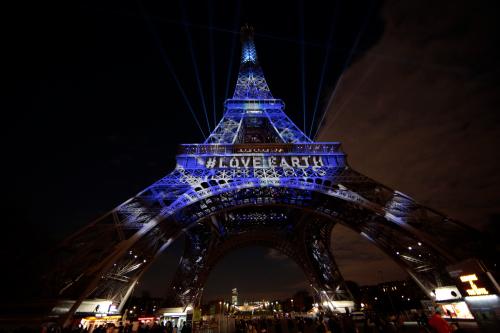
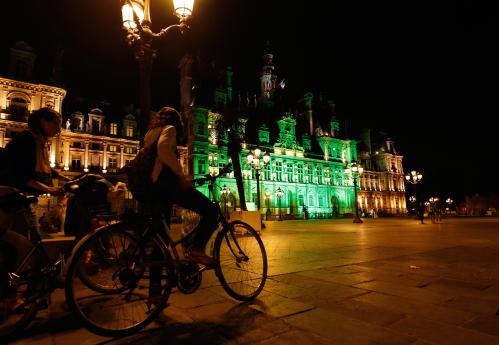
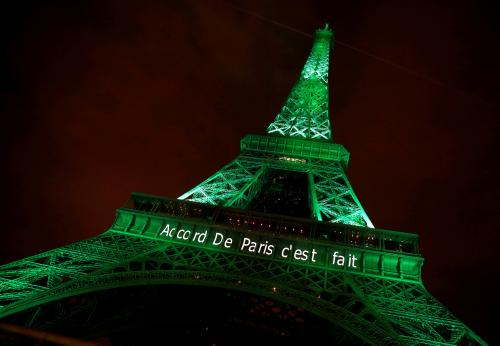
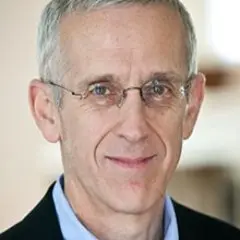
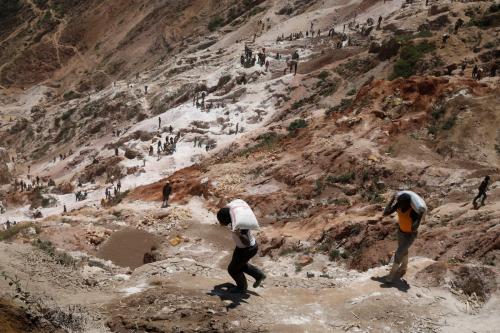
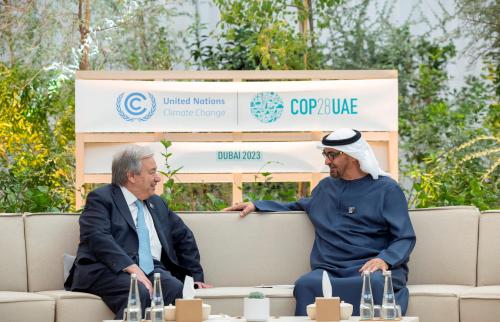
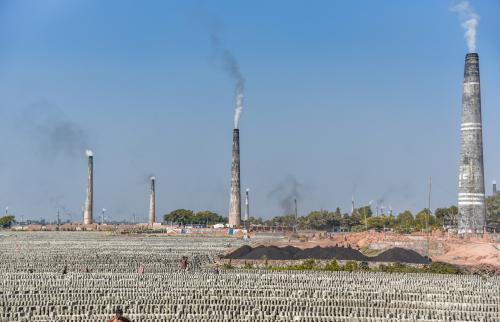
Commentary
The future of the Paris climate regime
An address by Todd Stern
April 11, 2018